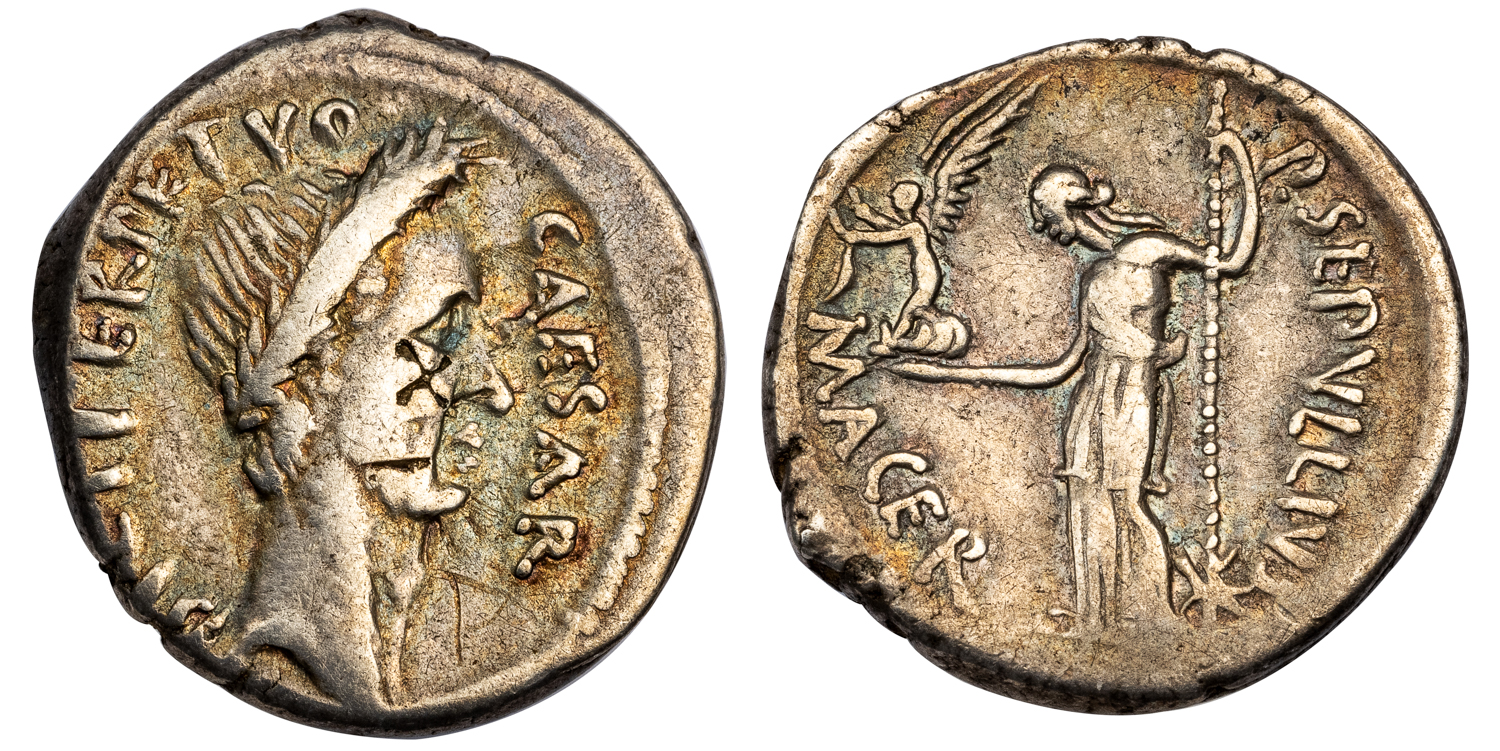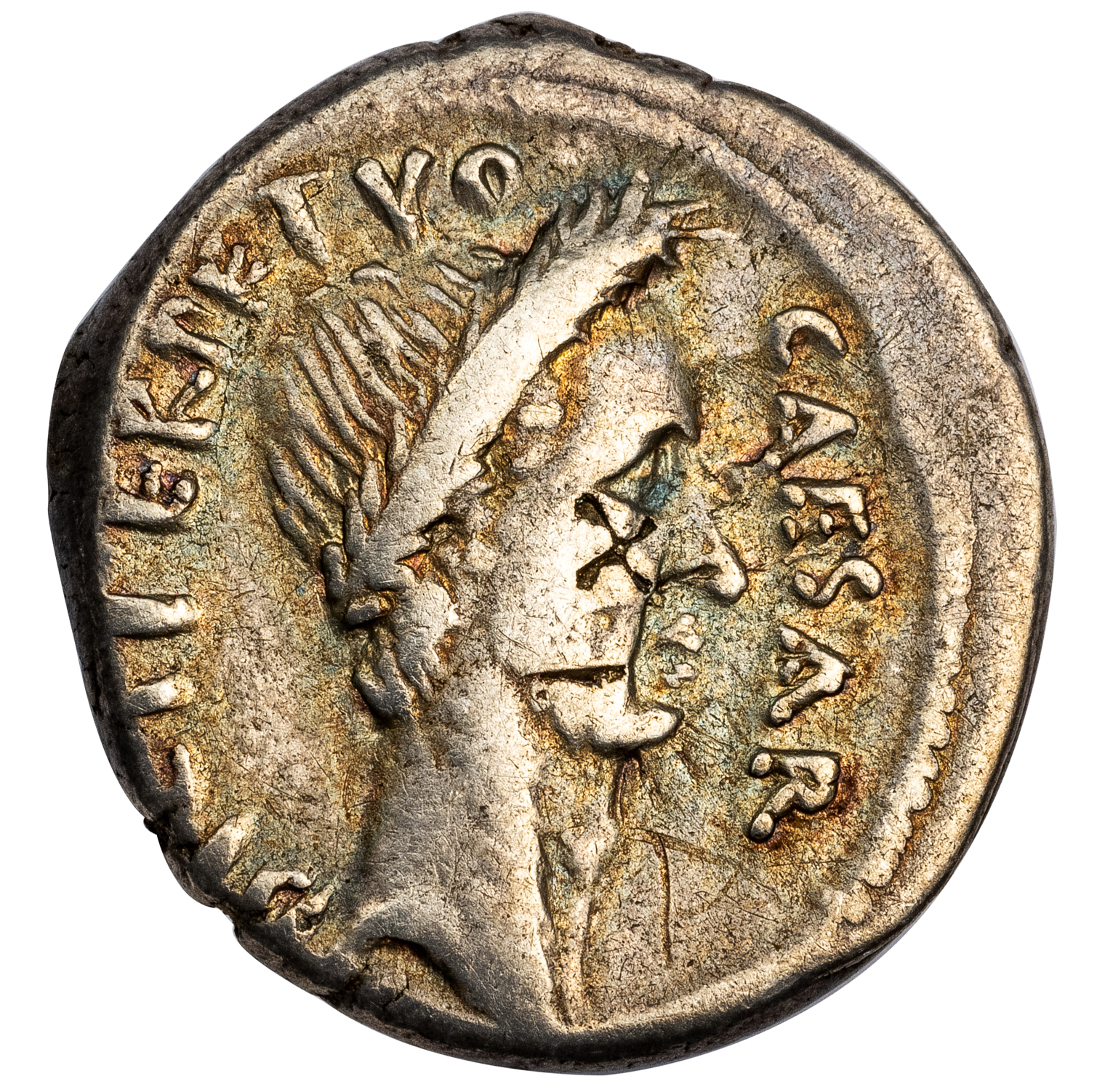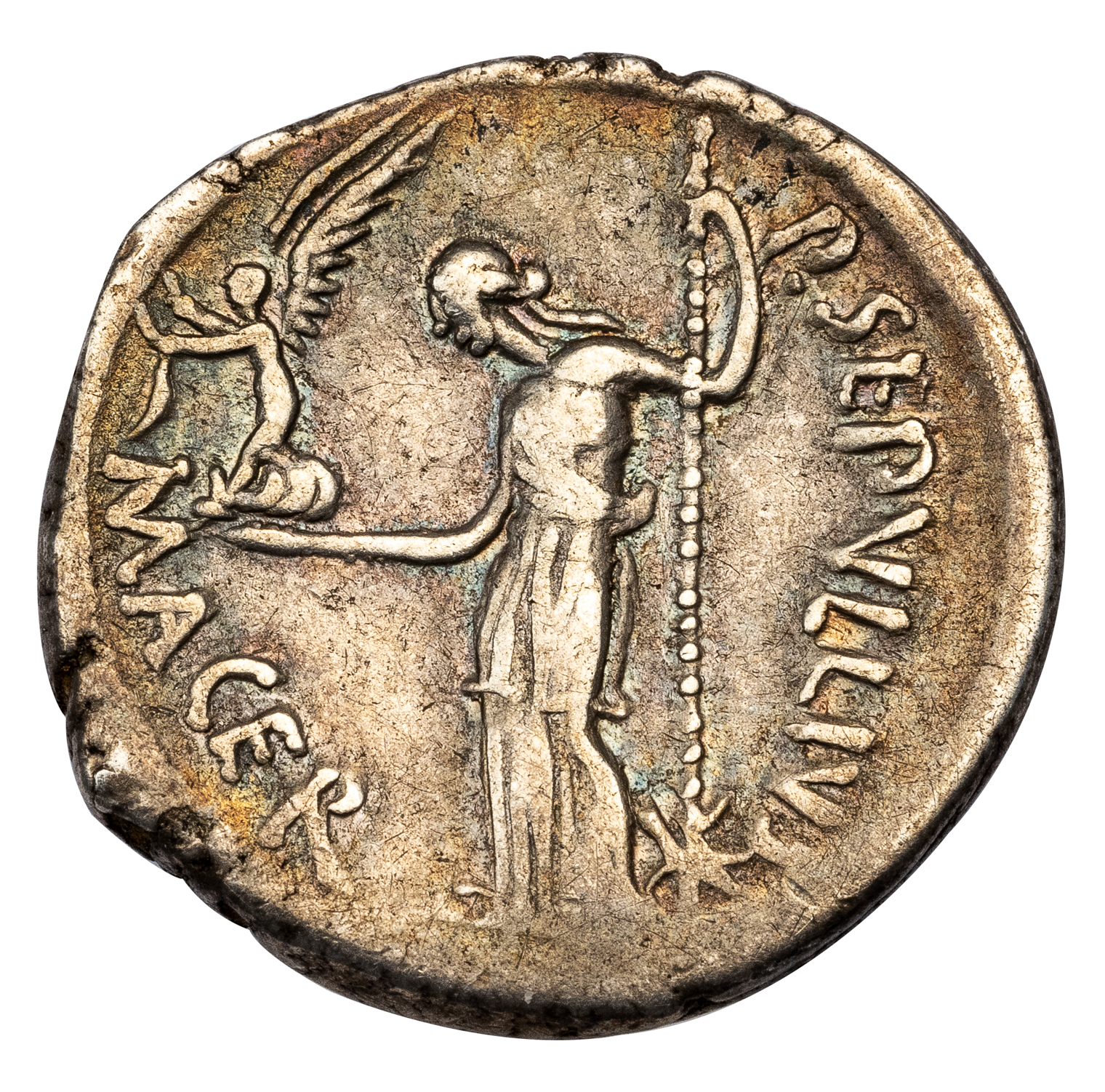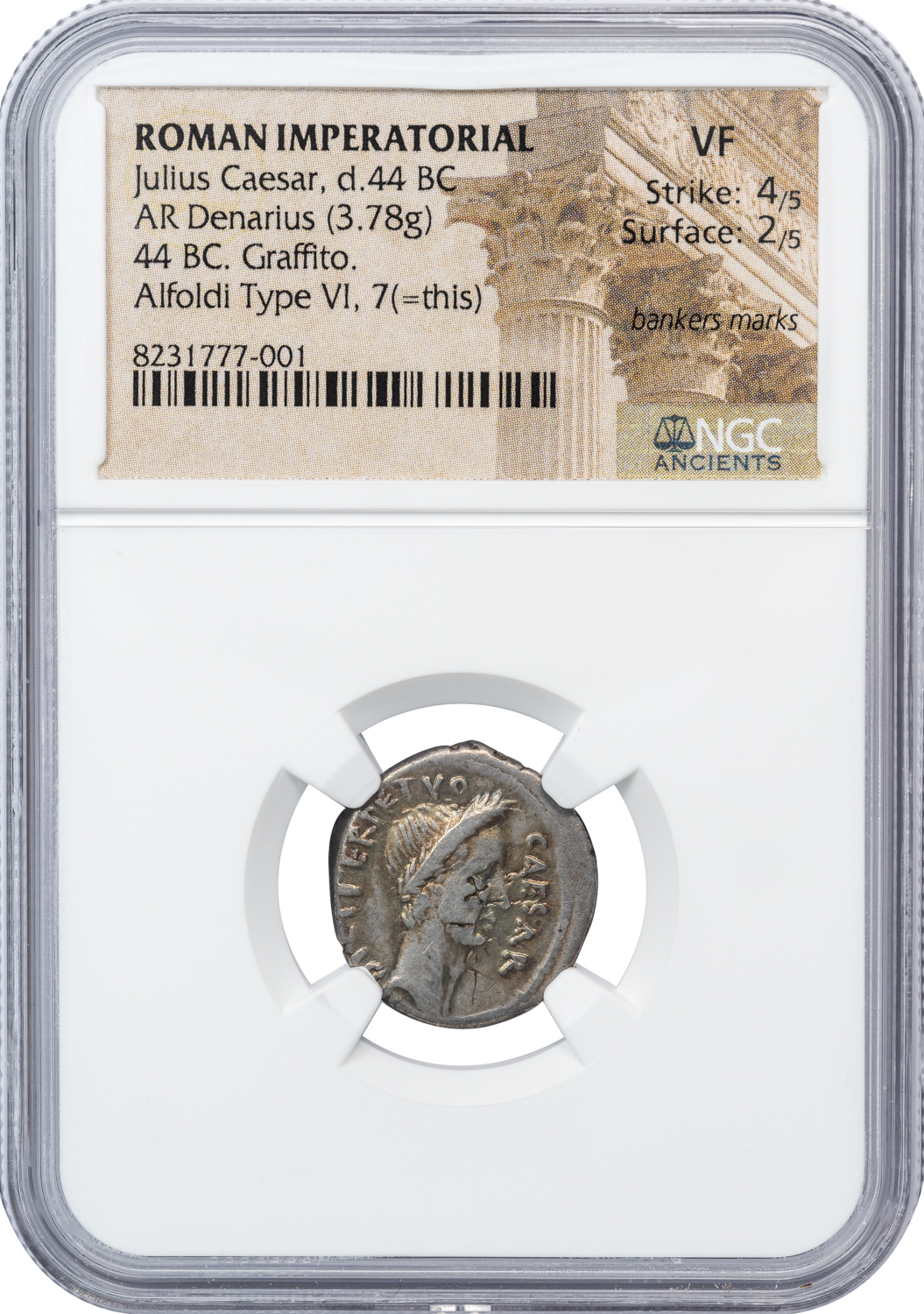JULIUS CAESAR SILVER PORTRAIT DENARIUS – LIFETIME MACER ISSUE EX CAHN 1932 SALE AND PUBLISHED IN ALFOLDI – VF NGC GRADED ROMAN IMPERATORIAL COIN OF THE 12 CAESARS (Inv. 20115)
$6,750.00
20115. ROMAN IMPERATORIAL. JULIUS CAESAR, d. 44 BC.
Silver Denarius, 3.78 g, 19 mm. Lifetime issue struck by moneyer P. Sepullius Macer at Rome, Feb-March 44 BC.
Obv. CAESAR DICT PERPETVO, laureate and veiled head of Caesar right, banker’s mark on cheek. Rev. P SEPVLLIVS MACER, Venus standing left, holding Victoria and scepter with star at bottom.
Alföldi Type VI, plate LIII, 7 (A24/R19 – this coin illustrated); Crawford, 480/11; Sydenham, 1072.
Ex CNG Triton XXVIII Online Sessions, 1/22/2025, lot 5638 = Robert W. Hubel Collection, acquired from Cahn 75, 5/30/1932, lot 778 (also cited in Alföldi).
NGC graded VF, Strike 4/5, Surface 2/5, “banker’s marks,” “graffito,” Alföldi publication noted on label.
This denarius, struck in March 44 BC, shortly before the fatal Ides, presents portrait of Julius Caesar in a veristic style (hyperrealism) and wearing a laurel wreath—the Roman corona triumphalis. Although he was permitted by the Senate to wear this wreath on all public occasions due to his many victories and his new status as “dictator for life” (as indicated in the legend DICT PERPETVO), it was believed in antiquity that he regularly wore it out of embarrassment at his receding hairline. The reverse type illustrates the repression of the traditional personal influence of the moneyer on Roman Republican coinage in favor of Caesarean iconography. While the legend names the moneyer P. Sepullius Macer, the type depicts Venus Victrix, a goddess closely associated with the gens Iulia and with the personal successes of Julius Caesar. The Julian family claimed its descent from Aeneas and Venus and Caesar had vowed a temple to Venus Victrix in return for victory over Pompey at the Battle of Pharsalus on 9 August 48 BC. However, in the aftermath of his victory over the Pompeians, Caesar instead opted to build the temple in honor of Venus as Genetrix, the originator of the gens Iulia. The temple was dedicated at the conclusion of Caesar’s great triumph on 26 September 46 BC. Unfortunately, Julius Caesar did not live to see the temple and its associated forum completed. It remained unfinished at the time of assassination and was only finished by Octavian as an act of filial piety.








